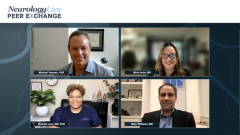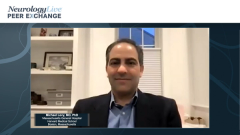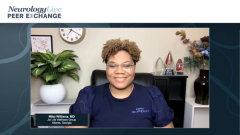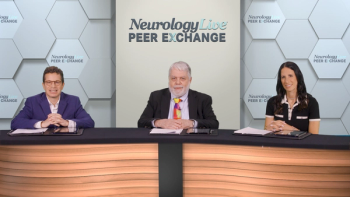
Disease Burden and Quality of Life for NMOSD
Mitzi Williams, MD, leads a discussion on the impact of the disease on quality of life for patients with NMOSD and their families.
Episodes in this series

Michael Yeaman, PhD: We also want to always include consideration of burden and impact of disease that isn’t just physical, including mental health, happiness, and wellness. Maybe we could take a moment to talk about quality-of-life issues that might differ in different populations. Mitzi, let’s start with you in terms of wellness as it is manifested by quality of life and impact of disease.
Mitzi Williams, MD: Absolutely. It’s extremely important to address wellness, particularly for my patients with NMOSD [neuromyelitis optica spectrum disorder], but really for all of my patients who have demyelinating disease. Mental health is a big issue, especially when people are diagnosed with a potentially devastating condition. There’s a lot of uncertainty about the future, so it’s important for us to start addressing mental health very early on, making sure people are connected with resources so that they can either talk to a counselor or connect with a psychologist or psychiatrist to talk through some of these issues, and that people have access to medication if they need it. This can be a huge barrier, particularly in communities of color, because there’s often a stigma attached to mental health services and receiving those services. We have to establish that trust and make sure that we discuss the importance so that we can help people be more open to receiving those services.
Michael Yeaman, PhD: Michael, how would you describe quality-of-life differences among different population groups?
Michael Levy, MD, PhD: Among the most disabling symptoms for my patients are pain and muscle spasticity. One time, we hosted a patient day where I offered a magic wand that could cure any one thing: blindness, paralysis, bowel or bladder issues, or pain, and 80% of my patients voted for pain, even those in wheelchairs or people who were blind. That issue hasn’t been well addressed. Even when you’re talking to a patient about all these new, wonderful medications, if they’re in pain, they aren’t fully paying attention. They just want relief from the pain. That’s the No. 1 quality-of-life issue that I try to address, and then everything follows after that.
Michael Yeaman, PhD: That’s really important. Mirla, we like to say that when one person gets NMO [neuromyelitis optica], we all get NMO. That’s particularly true for families. That includes care providers within families. Can you talk a little about your experience with populations in regard to family structure and quality-of-life outcomes?
Mirla Avila, MD: Sure. When Mitzi was talking, I wanted to add something about mental health services, which should also be offered to the caregivers. I have seen marriages fall apart. I have seen patients left alone because it becomes hard. Because of the pain and the quality of life, they sometimes become difficult. I have seen families that don’t stick together, which is very difficult for the patient. Offering educational programs for the caregivers to understand the disease and maybe also offering counseling for them to be able to cope is a need for the patient and their families.
Transcript Edited for Clarity
Newsletter
Keep your finger on the pulse of neurology—subscribe to NeurologyLive for expert interviews, new data, and breakthrough treatment updates.































